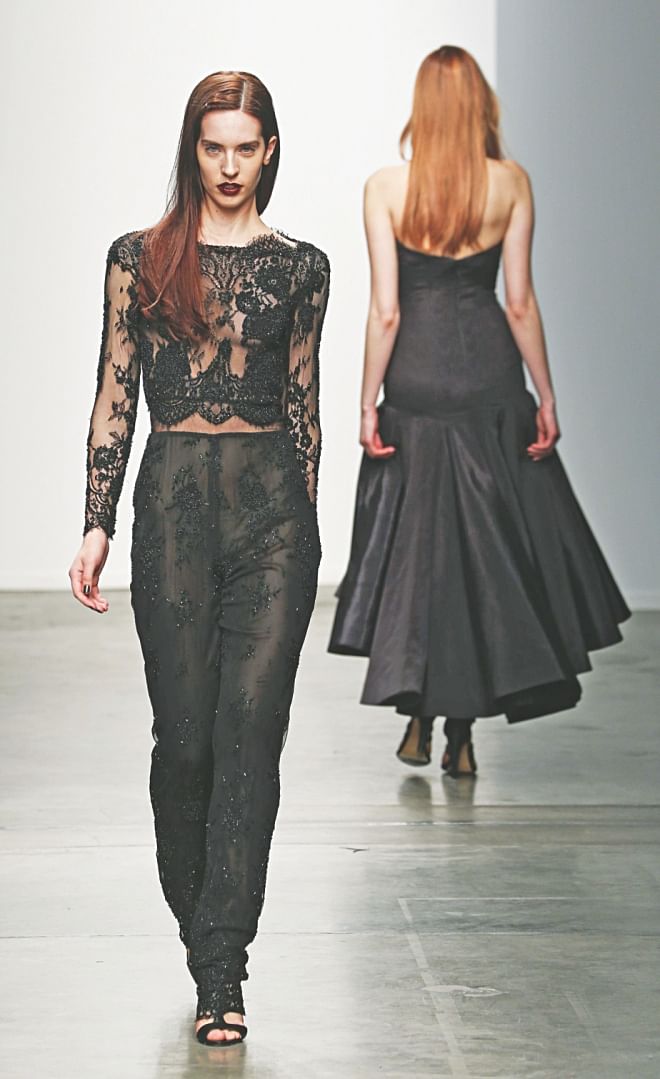Sink or swim in New York fashion hothouse
Sink or swim in New York fashion hothouse

New York attracts the most promising young designers from all over the planet, but cutthroat competition makes kings of the best and buries the mediocre.
Every year, hundreds of talented young people pour into the city dreaming of becoming the next Alexander Wang or Jason Wu, both stars of the runway before they were 30 years old.
The influx has helped fuel a renaissance in the local clothing industry, which had suffered badly at the end of the 20th century.
"Being a young designer in New York is the place to be. It's where you can get so much exposure," says Jonathan Bowles, executive director of the Center for an Urban Future, which is dedicated to developing the local economy.
New York has it all -- celebrated design schools such as Parsons and the Fashion Institute of Technology, a strong textiles tradition, international brands and biannual fashion weeks.
"Every year we seem to see a number of designers emerge out of almost nowhere and catapult their careers. It's really the place to do that," Bowles told AFP.
But it's a do-or-die atmosphere for those who still work for other fashion houses or even in other industries while waiting to launch their own line.
"It's a paradox," says Adam Friedman, executive director of the Pratt Center for Community Development.
"It is harder to break out, but on the other hand, this is where the talent is. So from a city perspective, you have this incredible concentration."
- 'You need a great product' -
"You need a great product," says Caroline Fuss, a 26-year-old Australian from Zimbabwe who cut her teeth at Proenza Schouler before founding ready-to-wear label Harare.
"You need something that the market doesn't know it wants yet and you need it to be well executed."
Fuss gets most of her fabrics made in small communities in Guatemala and cuts them at her studio in the Garment District, the spiritual home of New York fashion.
"We have amazing seamstresses that work for Thakoon and The Row and Sophie Theallet, so the quality of the make is extraordinary," she told AFP.
The sustainability and ethical aspect of her brand is very important, she says.
"I am a female, I want to continue to support female entrepreneurs and females externally in the world."
Lindsay Mann, the 29-year-old artistic director of Kotoba, a small line launched in the United States in 2012 by Japanese group Shima Seiki, admits that New York can be stressful.
But she feels her label has an edge thanks to its trademark knitting technology -- "wholegarment" -- and because the product is "100 percent made in USA."
"There are still so many small brands out there that are still manufacturing in China and I don't see why. If you're small, you should be manufacturing here," she said.
The machines used by Kotoba knit garments in one piece, making production quicker and requiring fewer staff.
There is "little to no waste," she said, adding that the process is "much more sustainable."
Ethical production has become a higher asset in the wake of tragedies such as the 2012 factory fire in Bangladesh that killed 111 and highlighted appalling safety conditions in the textiles industry.
Ivan Gilkes, co-owner of the Aikaz showroom, said being based in New York made it easier to work with clients and provided a boost to the local economy.
"It's an incredible city and a lot of stuff is getting outsourced from the US all the time and it's really great to support that (sustainability) effort," he told AFP.
Everyone agrees that "Made in NYC" is a very powerful brand for emerging designers, none more than Bob Bland.
Bland believes there is a lifestyle shift for customers who want to know more about where their clothes are made and for that, they are prepared to pay a little more.
"Fashion is designed to make people feel good about themselves," she told AFP.
"These tragedies that happen in the production of clothing is absolutely the opposite of making people feel good."